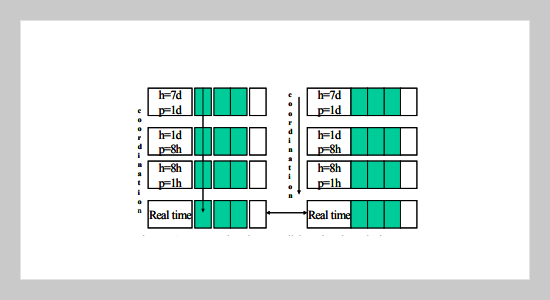REFERENCES
- [1] Bernus, P. and Nemes, L., “A Framework to Define a Generic Enterprise Reference Architecture and methodology,” ComputerIntegrated Manuf. Systems, Vol. 9, pp. 179-91 (1996).
- [2] Erman, L.D., Hayes-Roth, F., Lesser, V. R. and Raj Reddy, D., “The Hearsay-II Speech-Understanding System: Integrating Knowledge to Resolve Uncertainty,” Computing Surveys, Vol. 12, pp. 213-55 (1980).
- [3] Minsky, M. L., “The Society of Mind,” Voyager Company (1996).
- [4] Winograd, T., “Understanding Computers and Cognition: A New Foundation for Design,” Addison-Wesley (1990).
- [5] Balasubramanian, S.; Maturana, F. P. and Norrie, D. H., “Multi-Agent Planning and Co-Ordination for Distributed Concurrent Engineering,” International Journal of Coop. Information Systems, Vol. 5, pp. 153-79 (1997).
- [6] Schmidt, K. and Simone, C., “Co-Ordination Mechanisms: Towards a Conceptual Foundation of CSCW Systems Design,” J. CSCW, Vol. 5, pp. 155-200 (1996).
- [7] Deen, S. M., “Co-Operation Issues in Holonic Manufacturing Systems,” IFIP Tr. B (Appl. in Techn.), B-14, pp. 401-12 (1993).
- [8] Tamura, S.; Luh, P. B.; Oblak, J. M. and Watanabe, S., “A Planning and Scheduling Architecture for Holonic Manufacturing Systems,” Proc. 1st World Congr. on Intell. Manuf. Processes and Sys., Vol. 2, pp. 790-801 (1995).
- [9] Mathews, J., “Foundations of Intelligent Manufacturing Systems: The Holonic Viewpoint,” Comp. Integ. Manuf. Syst. Vol. 8, pp. 237-43 (1995).
- [10] Lawson, J. W., “A Quick Look at Matrix Organization from the Perspective of the Practicing Manager,” Engineering Management International, Vol. 4, pp. 61- 70 (1986).
- [11] Wall, W. C., Jr., “Integrated Management in Matrix Organization,” IEEE Trans. on Eng. Mgmt, Vol. 31, pp. 30-6 (1984).
- [12] Malone, T. W.; Crowston, K.; Jintae Lee and Pentland, B., “Tools for Inventing Organizations: Toward a Handbook of Organizational Processes,” Proc. 2nd Worksh. on Enabling Technologies Infrastructure for Collab. Enterp. pp. 72-82 (1993).
- [13] Bernus, P.; Bertok, P. and Nemes, L., “Modeling Dynamic Management Features of Virtual Enterprises” (1998).
- [14] Flood, R. and Jackson, M., Creative Problem Solving, Wiley, England (1991).
- [15] Doumeingts, G., Fenie, P. and Chen, D., “GIM (Grai Integrated Methodology): a Methodology to Specify and to Design Advanced Manufacturing Systems,” Proc. ILCE '94. Integr. Logistics and Conc. Engineering, pp. 271-80 (1994).
- [16] Panayotopoulos, A. and Assimakopoulos N., “Problem Structuring in a Hospital,” European J. of Operational Research, Vol. 29, pp. 135-143 (1987).
- [17] Assimakopoulos, N., “Structured Total Systems Intervention Systemic MultiMethodology of Valuable Systems and Meta Systems (STIMEVIS),” Human Systems Management, Vol. 19, pp. 61-69 (2000).
- [18] Vernadat, F.B., “Business Process and Enterprise Activity Modeling: CIMOSA Contribution to a General Enterprise Reference Architecture and Methodology (GERAM),” ICARCV '94. Vol. 1, pp. 378-82 (1994).
- [19] Vernadat, F., Drira, K. and Azema, P., “An Integrated Description Technique for Distributed Co-Operative Applications,” CESA'96 IMACS. Comp. Eng. in Sys. Applications, pp. 608-12 (1996).
- [20] Kotorov, R. P., “Virtual Organization: Conceptual Analysis of the Limits of its Decentralization,” Program in Institutional Theory and History Bowling Green State University.
- [21] O’Leary, D., Kuokka, D. and Plant, R. “Artificial Intelligence and Virtual Organizations,” Communications of the ACM. Vol. 40, pp. 52-59 (1997).
- [22] Janiwski, T., Lugo, G.G. and Zheng, H., “Composing Enterprise Models: the extrended and the Virtual Enterprise,” The United Nations University, International Institute for Software Technology, Report No. 131, Feb. (1999).
- [23] Preston S. M., “Virtual Organization as a Process: Integrating Cognitive and Social Structure Across Time and Space”.
- [24] Stamps, J., Lipnack, J., Virtual Teams, John Wiley & Sons (1997).
- [25] Sims, O., “Enabling the Virtual Enterprise -The Internet and Object Technology are Providing the Infrastructure” (1996).
- [26] XC-317 Cisco IOS Switching Services Configuration Guide “Configuring Token Ring LAN Emulation for Multi-Protocol over ATM,” www.cisco.com/univercd/cc/ td/doc/product/software/ios121/121cgcr/swit ch_c/xcprt8/xcdmpotr.pdf
- [27] “LAN Emulation and Multi-Protocol Over ATM, ” White Paper, http://www.cabletron. com/white-papers/atm/lan-emulation.html
- [28] Williams, T. J., “The Purdue Enterprise Reference Architecture,” Computers in Industry, Vol. 24, pp. 141-58 (1994).
- [29] Assimakopoulos, N., “Systemic Project Management Process for Information Systems,” Information and Decision Technologies, Vol. 19, pp. 349-364 (1994).
- [30] Churchman, C., “The Design of Inquiring Systems,” Basic Books, NY, U.S.A. (1971).
- [31] Checkland, P., “From Optimizing to Learning: A Development of Systems Thinking for the 1990’s,” J. of the O.R. Society, Vol. 36, 757-767 (1985).
















